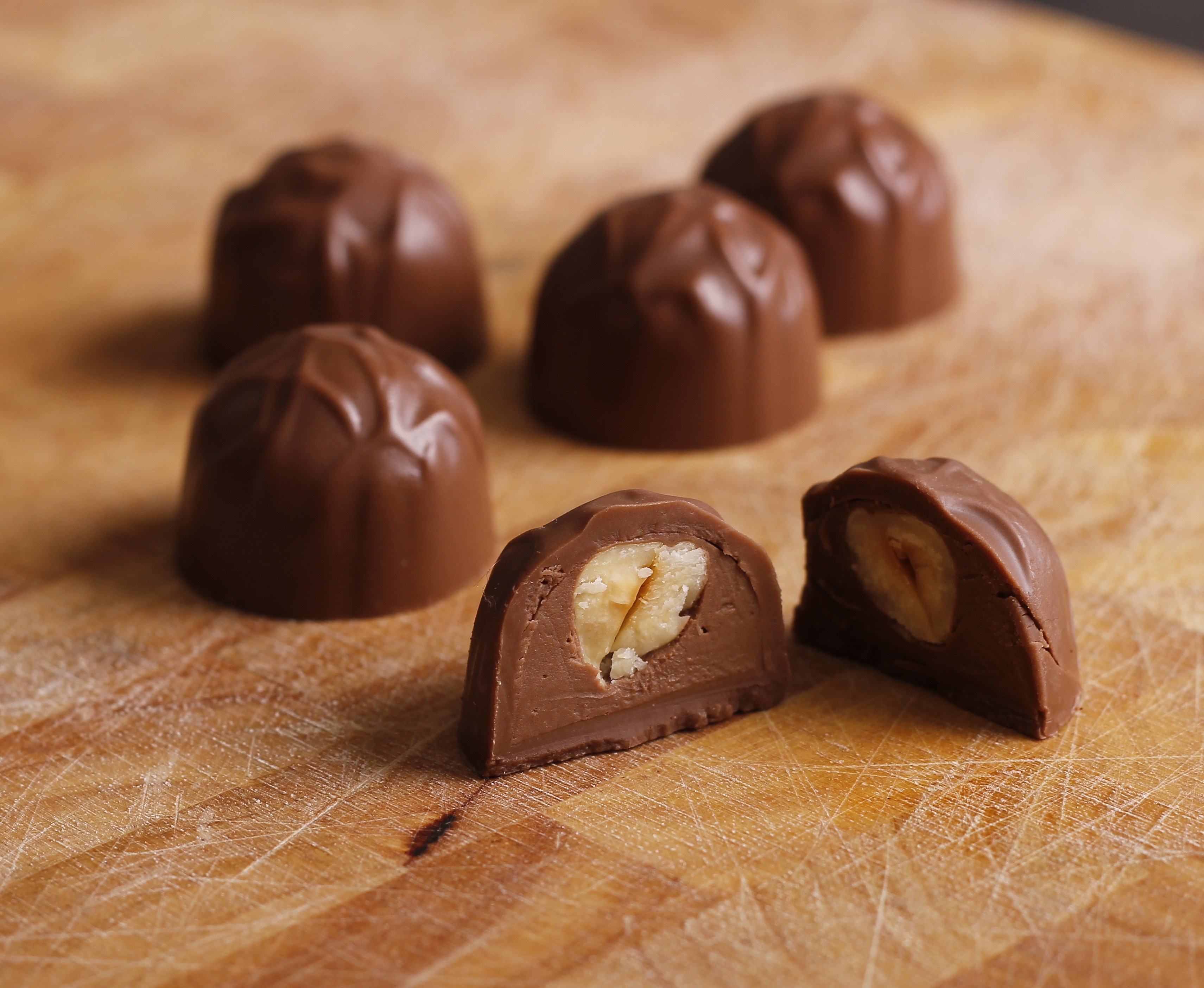Chocolates with nuts are much more than a sweet treat. Its combination of
flavours and textures produces very appealing sensations on the palate, which restaurant and catering professionals take advantage of to surprise their customers with something special.
Consumption of nuts with chocolate
The consumption of chocolate with nuts is increasingly consolidated among consumers, who consider it a premium product, with more flavour and quality, as well as greater energizing power. Furthermore, in most cases, they define it as a «special» product with its own personality. All these positive aspects mean that its consumption increases year after year, even though its price is higher than other types of chocolate.
Statistics on the purchase of chocolate with nuts indicate that consumers choose almonds as one of their favourite ingredients, due to their nutritional capacity and their natural origin. It is also worth noting that these products used to be considered special day treats, but now most people choose them as an everyday snack, as they are considered to be healthy for the body.
Recommended reading: Chocolate dragées with nuts: shake up your sweetest creations
Types of chocolates and their differences
Currently, we can find different types of chocolate on the market, with very
defined ingredients and flavours. Knowing them allows us to better understand, among other things, what the final result will be when creating products such as chocolates with nuts. Considering the regulations in this regard in Spain, the most basic classification is as follows:
WHITE CHOCOLATE
It is one of the most controversial chocolates because it does not actually contain cocoa, only cocoa butter, milk and sugar. However, to be considered white chocolate as such, it must contain at least 20% cocoa butter.
It is defined as a variant of chocolate and its use is very common for decorating and complementing confectionery preparations. The flavourings it contains make it very attractive to the palate.
DARK CHOCOLATE
It is notable for its low sugar content and is made with at least 35% cocoa and 18% cocoa butter. Therefore, it has a more bitter taste. Technically, in Royal Decree 1055/2003, chocolate is «the product obtained from cocoa products and sugars containing at least 35% total cocoa dry matter, of which at least 18% is cocoa butter and at least 14% is fat-free cocoa dry matter».
The most common dark chocolate has a total of 70-75% cocoa, and is used both in desserts and to enhance flavours in savoury dishes, such as duck or rabbit stews.
MILK CHOCOLATE
It is the most popular, as it is sweeter because it incorporates condensed or powdered milk. It contains at least 25% cocoa, and is commonly marketed in bar form. It is also widely used in confectionery products, such as the combinations of chocolates and nuts.
Benefits of mixing almonds with chocolate
Chocolate and almonds form a perfect pairing, in which the sweet and salty features of both elements are joined together to create a unique sensation on the palate. As a result, consumers find it much tastier.
Flavour and texture innovations make chocolates with nuts a premium product, providing added value to nut lovers.
FLAVOUR
One of the priorities of consumers of chocolate as a snack is to enjoy its flavour. Most of them consider that the flavour is enhanced if nuts are added. In addition, it has been proven that the greater variety of flavour nuances produced by this type of product has been shown to increase consumer loyalty. For this reason, more and more chocolate makers are looking for new flavour and aroma options to offer their customers a different gastronomic experience.
TEXTURE
When we taste chocolate, we want to find one of its three basic textures: smooth, creamy and crunchy. In this case, nuts play a very important role, offering a crunchy, distinctive and personal touch to any chocolate snack. The addition of elements such as walnuts or almonds has made more and more customers demand different textures when consuming chocolate.
Learn more about Itac Professional’s chocolates with nut kernel
Successful combinations of nuts with chocolate
Mixing different types of chocolates with nuts is an excellent option to complement dessert, sweet and confectionery recipes worthy of the best chefs. For example, we can top off a meal with a poached pear dipped in chocolate and almonds, or a ginger cake with chocolate and almonds.
The menus of large catering establishments also include delicacies such as almond milk truffles, chocolate domes with almond butter and cardamom or crunchy chocolate batons with almonds, spiced marzipan and almond praline. All these confectionery proposals take advantage of the textural nuances offered by nuts to make consuming chocolate a unique experience.
Itac Professional’s chocolates with a nut kernel
At Itac Professional, and as manufacturers of nuts of the Importaco Group, we are aware of how attractive chocolates with nuts are for hospitality and restaurant clients. For this reason, we offer a wide variety of these products, always made with artisanal techniques that guarantee their highest quality and flavour, providing our vision as specialized suppliers of almonds and peanuts.
Our chocolates with a nut kernel include almond bonbons with Belgian, white and Swiss chocolate and even cocoa truffles. A variety suitable for the tastes of all consumers.
Customers who are looking for healthy and nuanced food outside the home can also find cashew bonbons with Belgian chocolate, as well as truffled white hazelnut bonbons with cinnamon and Belgian chocolate, and even peanut bonbons in our product range.
Other combinations of chocolate and dried fruit varieties that are surprising for their texture and taste include chocolate pipes, nuts with Swiss chocolate and bonbons with dried fruit cores, such as cranberry, orange, sultanas and banana.
Itac Professional‘s chocolates with nuts and dried fruits are a healthy and tasty treat, perfect for the most special moments. Made with processes that guarantee their quality, they are a good option for Food Service companies and, of course, for hotel and catering businesses.



